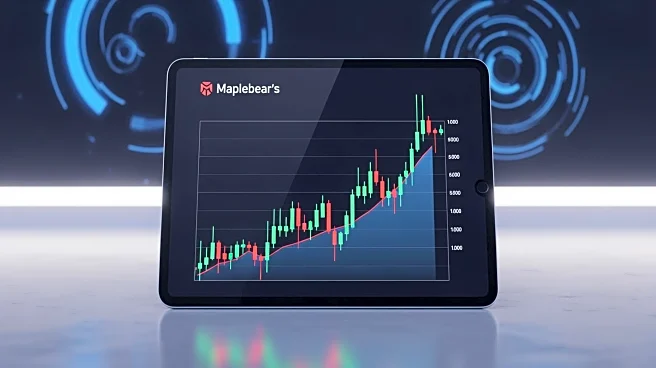What's Happening?
BP plc is reportedly in active negotiations to sell its Castrol lubricants arm to Stonepeak, an infrastructure investor. This move is part of BP's broader strategy to raise up to $20 billion through divestments.
The potential sale of Castrol, valued at approximately $8 billion, comes as BP's stock experienced a decline, closing at £4.68, down 1.74% on the day. The stock's performance was influenced by a significant drop in Brent crude prices, which settled near $62.7 per barrel, amplifying a risk-off tone across energy equities. Additionally, BP continues its share buyback program, repurchasing approximately 1.51 million shares. The company is also preparing for its ex-dividend date, with ordinary shares going ex-dividend on November 13 and ADS holders on November 14.
Why It's Important?
The sale of Castrol could significantly impact BP's portfolio, potentially simplifying its operations and providing funds for balance sheet flexibility, buybacks, or core upstream projects. Investors are closely monitoring the valuation, tax implications, and use of proceeds from the potential sale. The decline in crude oil prices poses a challenge for BP, affecting near-term cash flow expectations and refining margins. BP's ongoing share buybacks demonstrate its commitment to returning surplus cash to shareholders, which may cushion stock weakness but not fully offset oil price volatility. The upcoming ex-dividend date is also a critical factor, as it typically influences short-term price movements.
What's Next?
If negotiations for the Castrol sale advance, investors will be keen to see a signed deal and understand the financial implications. The path of crude oil prices will continue to be a significant factor in BP's stock performance. The ex-dividend date may lead to technical price adjustments, and BP's ongoing buyback program will likely continue to support shareholder returns.
Beyond the Headlines
The potential sale of Castrol highlights BP's strategic shift towards streamlining its operations and focusing on core areas. This move could reflect broader industry trends where energy companies are reassessing their portfolios in response to market conditions and environmental pressures.












